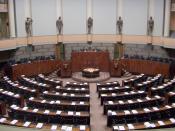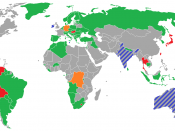Two Countries and governments that have electoral system similarities are those of Germany and Finland. They both use systems of the proportional representation model. Proportional representation, also called "full representation" is the voting system used in most Western democracies and is widely considered to be fairer and more democratic than the current U.S. system.
THE FINNISH SYSTEM
History
The Finnish system came into being in 1906. Elections then were held the next year. These elections were the first free proportional elections for both men and women. Since 1906, all women and men have been eligible to vote and to be nominated in elections. The age requirement to vote has been steadily lowered from 24 in 1906 to 21 in 1994, to 20 in 1969, and to the present age of 18 in 1972.
Since the introduction of proportional representation in 1906, Finland has used the d'Hondt constituency list system with only slight modifications.
This system is also known as the highest-average method of determining the allocation of seats to political parties after elections. The system was developed by a Belgian man, Victor d'Hondt, to be used in electoral systems based on proportional representation. Austria, Portugual, Switzerland, and Finland have adopted this system. Under this method, voters do not choose a candidate but vote for the party, each of which has a published list of candidates. The party winning the most votes in a "district," is awarded the area's first seat, which goes to the candidate listed first on the winning party's list. The total vote of this party is then divided by two, and the amount is then compared with the totals of the other parties. The party with the greatest number of votes at this point receives the next seat to be awarded. Each time a party wins a...


